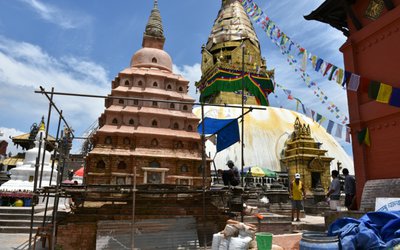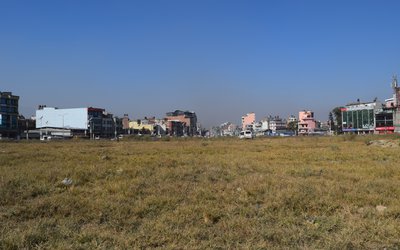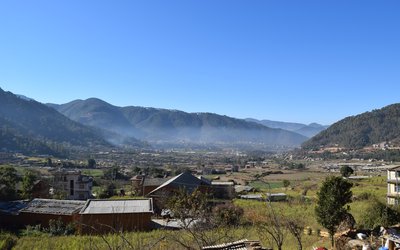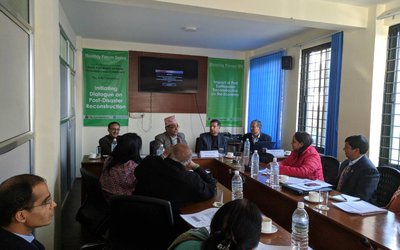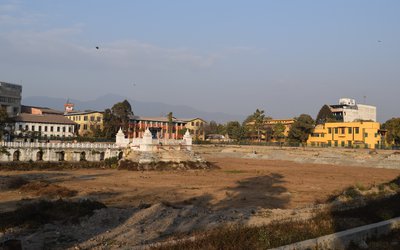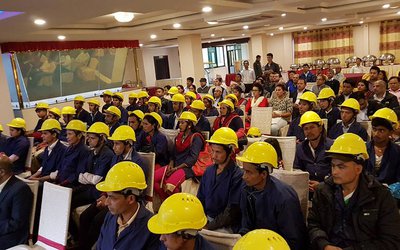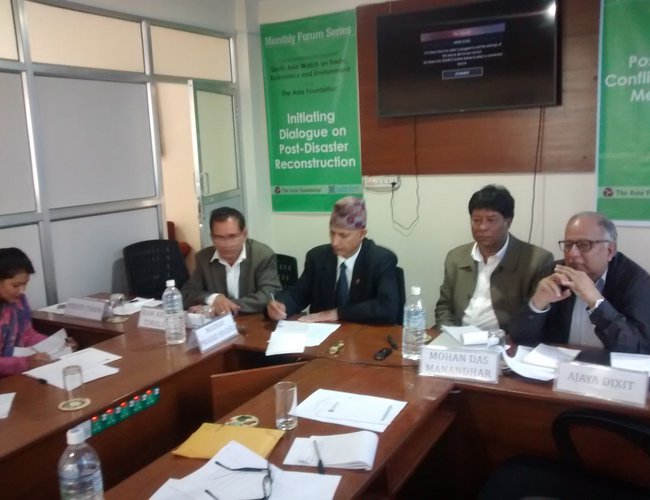
The April 2015 earthquake and the subsequent aftershocks made people in Kathmandu Valley realise the value of open spaces, among many other things. Not only the most damaging two large tremors, but smaller aftershocks also left people scouring for safer open space –that were relatively less vulnerable to damages from falling structures. Furthermore, open spaces were crucial in the immediate relief and rescue operations. Families whose houses were damaged by the earthquake or who were too traumatized by the shakes to sleep indoors stayed in the temporary shelters erected in the available open spaces throughout the valley for months till the aftershocks subsided.
Back then, when the earthquake’s effects loomed large on public psyche, Nepal’s public sphere saw a discourse on the importance of open or unbuilt spaces as a part of disaster risk reduction mechanism in the urban areas. However, as the earthquake has started to become a distant memory and lives have returned to normalcy, it is imperative that policymakers and citizens keep alive the dialogue on reclaiming open spaces in the urban areas.
According to the urban design literature, open spaces range from organized green spaces, such as parks, private gardens, sports complexes, courtyards, to natural landscapes such as woodlands, grasslands, among others. The basic premise is that open spaces are social spaces in the public domain that are not occupied by buildings. Open spaces are crucial in densely populated urban areas –not only for their aesthetic value but with regard to disaster management as well.
Realising the importance of open spaces, the government had identified 83 open spaces in the valley as the possible spot for temporary shelter and evacuation back in February 2013 –more than two years before the great earthquake. The identified spaces include major pieces of vacant land such as Tundikhel, educational institutions – schools and colleges, airport, stadiums, temple complexes, among others. Immediately after the earthquakes, International Organisation of Migration undertook a rapid assessment of the open spaces. It found that 33 open spaces were used by some 30,904 displaced people from more than 5,500 households.
Incorporating open spaces in living quarters is not a new phenomenon. The traditional architecture of the Valley is an example of residential buildings being constructed around courtyards –that provide space for conducting social and religious functions. However, in the Kathmandu Valley, where an inch of land is traded for hundreds of thousands rupees, open spaces have become a rarity.
Along with serving social and religious purposes, public open spaces are also crucial to resist, accommodate and recover from disasters. Technically sound building procedures and retrofitting alone do not make a disaster-resilient city. In a multi-hazard country like Nepal, disaster preparedness is of utmost importance to prevent hazards from transforming into disasters. Literature has found that open spaces help in relief and rescue operations for other disasters such as flood, landslides, and cyclones along with earthquakes. These lands provide space for people to evacuate to safety and gather to receive relief.Such spaces also act as a safety buffer in the event of earthquakes.
Given the high population density and haphazard construction of physical structures, the capital city is highly vulnerable to disasters. In the 2015 earthquake, 59 percent of the casualties and one-fourth of the total damaged houses were reported from the Valley despite it being identified as a crisis-hit and not a severely hit region. The Settlement Development, Urban Development and Building Construction Basic Bylaws, 2072 which was introduced in the aftermath of the earthquake also have made it mandatory to leave fiver percent of total land use for open spaces. Moreover, private housing developments also have to maintain four percent of the total land as open space. But they fulfill this requirement by allocating marginal and leftover land which cannot be sold as housing plots, which do not serve many purposes.
The skyrocketing price of pieces of land in the valley has made every piece of vacant land invaluable for developers. The running rate of one square foot of land in commercial Durbar Marg is estimated to be about NPR 6.85 million while the land price in relatively residential Baneswore stands about NPR 4.3 million. Thus, there is a high chance that land developers will not let go of any piece of open space. The case of NandikesharBagaicha is one such example, where civil society had to become highly mobilized for years to prevent land grab of the open space in central Kathmandu.
Although the government has mapped the open spaces as a part of disaster preparedness, these spaces are not actually open. The existing open spaces are either used by local community clubs, or as vegetable markets or even as parking space, among others. Moreover, even government is responsible for encroachment of such land for the construction of office buildings, schools, temples, health posts and so on. In some cases, even government entities try to lease out vacant open spaces as it happened in case of NandikesharBagaicha. GuthiSansthan had tried to lease the land to the private sector.
Thus, having open spaces identified and mapped is not enough if there is no space available when in need. The citizens need to be adequately informed about such spaces in their areas and provided with plans regarding how to reach these spaces in case of emergency. Moreover, in case of using open space for temporary shelter, a plan for resettlement or humane evacuation of these spaces after a certain period also needs to be prepared. Else, cases of government bulldozing the earthquake survivor camp as the Nepali government did in March 2017 at Chabahil could not be avoided.

Dikshya Singh
Singh is a Research Officer of South Asia Watch on Trade, Economics and Environment (SAWTEE). She can be reached at dikshya.singh@sawtee.org
- Labor Conundrum During Reconstruction
- Sep 10, 2017

